An air compressor is a tool that you should definitely own, as they are quite convenient and cost-effective. If you are wondering about the potential uses, except for inflating tires, powering machinery and pneumatic tools, you should consider that it can be a practical piece of equipment that can have a few other applications too. It can be used as a part of a pressure washer to clean the dirty surfaces in your patio, garage, backyard, driveway, pool deck – you only have to insert the pressure washer attachment on the air outlet and connect your garden hose. It can be also used for sandblasting to remove paint, rust, and residue from various materials in order to prepare them for painting, or in drying off your vehicles, machinery or any parts of it, and cabinets. You can also use it in airbrushing of walls, fences, or even furniture – that way you will finish paint jobs more efficiently since it will apply the exact amount of paint and will prevent any paint spills.
However, picking the right one can be a hassle, and here we are to share some tips on what to think about when trying to choose the best air compressor for a home garage. Also, you can visit toolblaze.com where you can find awesome reviews and then pick the right one for you.
Contents
1. Determine the specifications
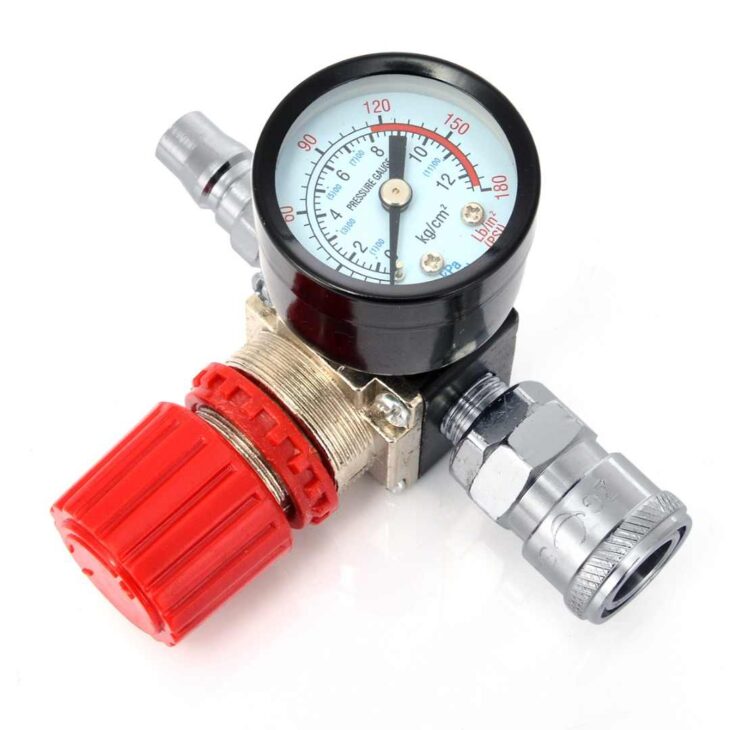
img source: alicdn.com
How often will you use your compressor, and for how long will it operate? Since they can overheat, it is important to give them cooling periods according to the instructions by the manufacturer, the so-called duty ratio. It tells you for how many minutes out of 60 it can operate before it needs cooling.
The first thing that you must do is to find out is the maximum pressure that your machines or tools will require. As per the provided maximum pressure, air compressors can be single-stage (up to 9 bars) or multi-stage (up to 400 bars), and this mostly depends on their purpose.
Another necessary piece of information is the maximum flow, which basically represents the volume of air provided by the compressor that can supply the connected devices. When calculating the desired volumetric flow, it is recommended to add a 30% safety margin in the overall estimates so that potential future issues and surprises can be avoided.
The preferred airflow and the output pressure is the compressor’s strength – and it is dictated by the job that you will have to perform with it. Since high power low flow rate air compressors are is intended for occasional use, they will require frequent and longer cooling periods.
Horsepower is the measuring unit for the total amount of work that a motor can perform, and air compressors typically have between 1.5 and 6.5 HP, although some bigger, stationary ones offer up to 15 HP, they are mostly industrial grade. If your power source will be a standard electric power outlet, you should get an air compressor of 2 HP or less, due to the voltage demands of the electrical cords.
2. Contemplate the size
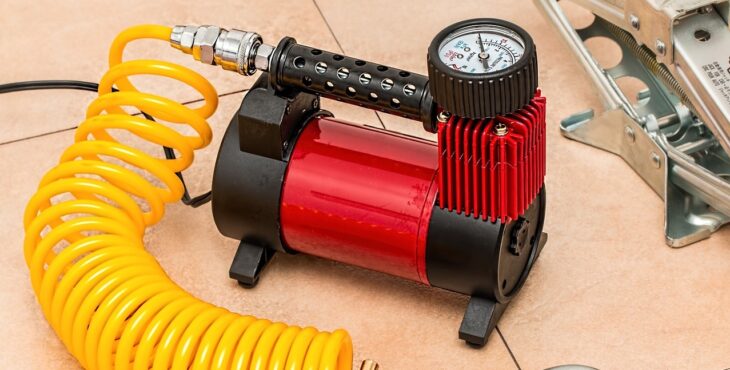
img source: handymansgarage.com
For many simple tasks, you will probably need a consumer-grade air compressor, usually a portable one, but if you want to power multiple air tools at once, or achieve higher and more powerful air pressure, you can get a professional-grade compressor. The industrial-grade probably is not a wise choice for your garage as it would take up too much space and would not be adequate for your everyday tasks. These kinds are meant for continuous use. However, the consumer-grade ones often don’t offer uninterrupted airflow and require regular pauses so that they don’t overheat.
Also, another thing to think about is the tank size, as it must be properly calibrated so that the engine will not be constantly running. If you tend to be working for extended periods of time, naturally, you will need a bigger tank, but you have to accommodate it somewhere where it would be safe and within reach. There are also vertical tanks that are more practical for enclosed spaces such as a garage since they don’t take up much precious horizontal space.
3. Consider the power source
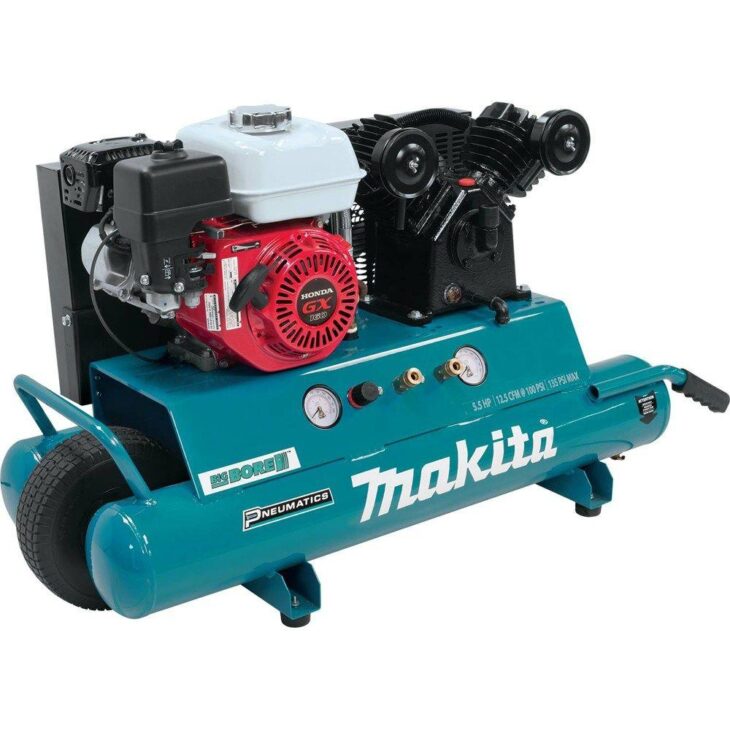
img source: homedepot-static.com
An electrically powered air compressor is the perfect choice for a limited budget. The portable ones can be moved around the garage or the backyard, but commonly, they are less powerful. As mentioned before, if you will be plugging your compressor into a standard electrical power outlet, have in mind that this will limit the horsepowers down to 2. Another power source can be a combustion engine – diesel or gasoline – but they are not intended for interior use as they have exhaust emissions. Additionally, they are not ecological since they contribute to air pollution.
4. Configuration
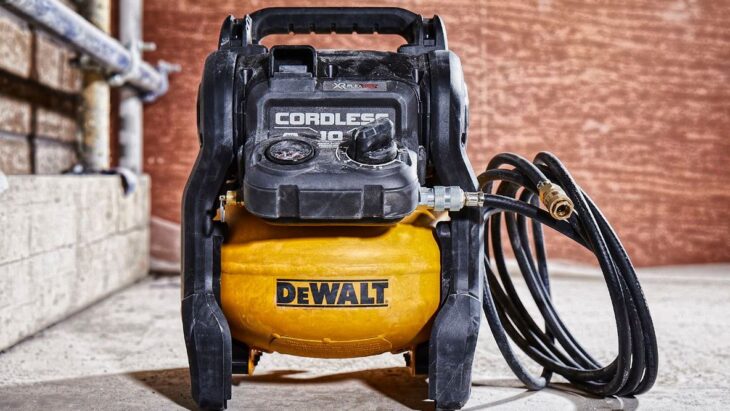
img source: kinstacdn.com
Depending on its purpose, you must decide between a portable, transportable and a stationary compressor. Do you want to be able to pick it up, or roll it on wheels, or you will be keeping it in some corner of your garage? Do you have enough room to install one, especially if it comes with a big tank? Will you also have to get longer hoses and will that do the job? Try answering these questions so that you will get a much clearer picture of what you are looking for.
5. Oil lubrication
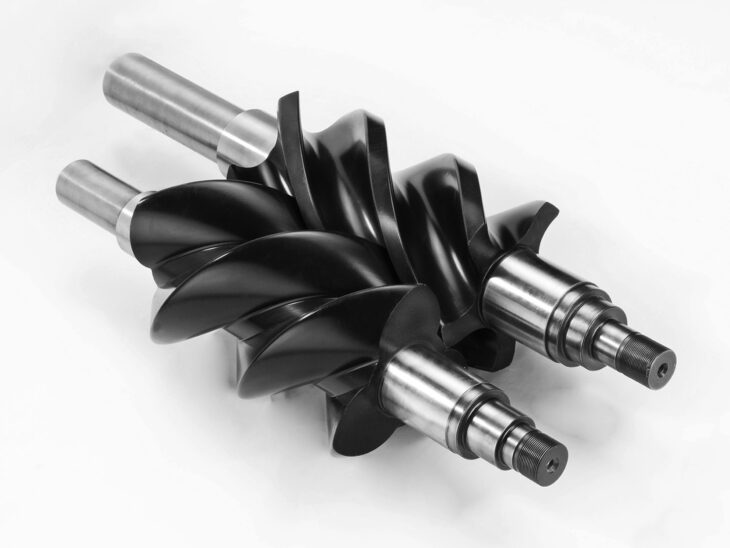
img source: elgi.com
Oil-lubricated air compressors are found to have a longer life-span than the oil-free. Also, the lubricated ones are much quieter, but not that environmentally friendly, as they do not supply clean air from their outlet. The oil-free compressors are usually used in the industry. Sometimes, oil lubrication can be replaced by a special coating, distillated water or a closed-loop water system, and this kind of compressors are louder but require less maintenance in the long run.
6. Plan the maintenance
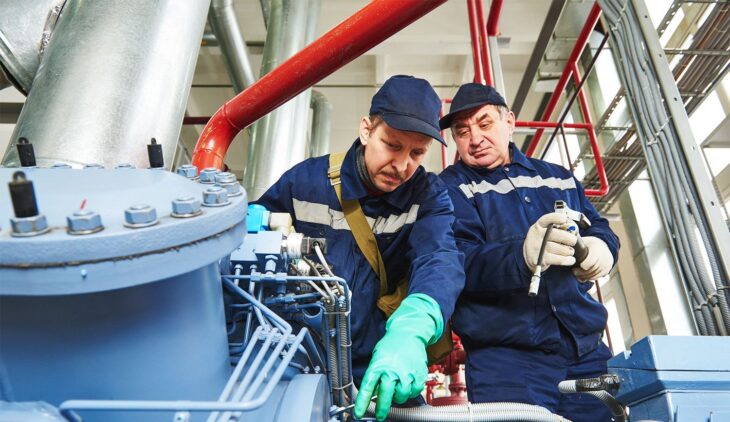
img source: compressorcare.com.au
As you are making an investment in this piece of equipment, you will have to think about repairs and maintenance. That is why you should make sure that you will buy it from an authorized dealer who will offer quality products and after-sale support and services.
